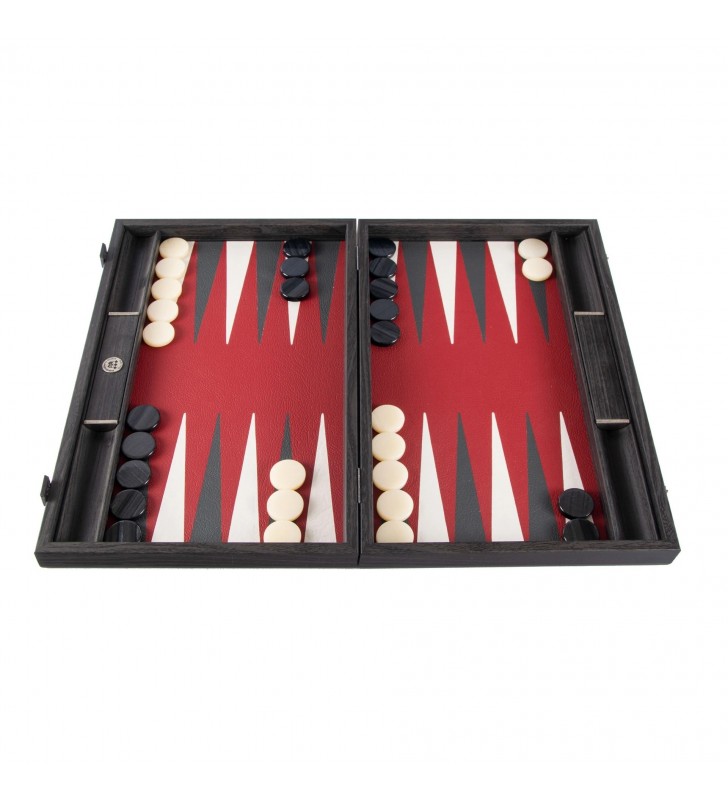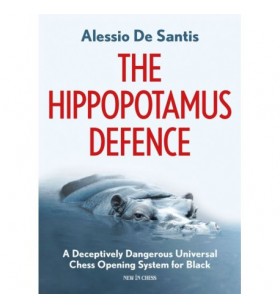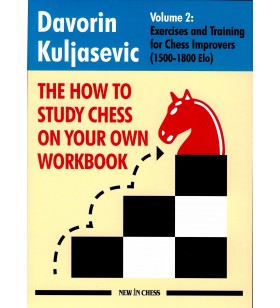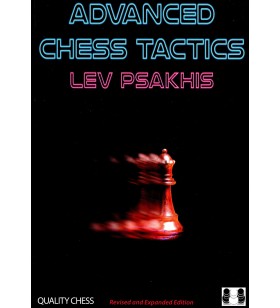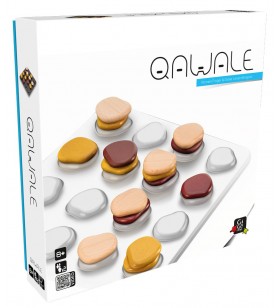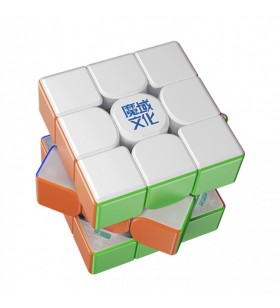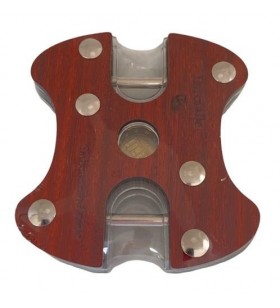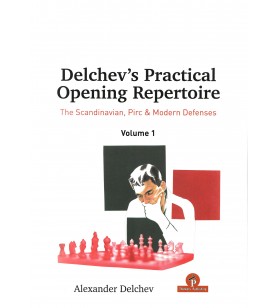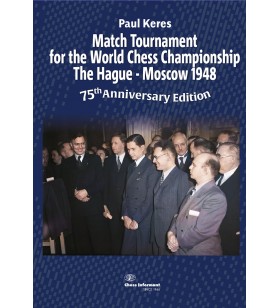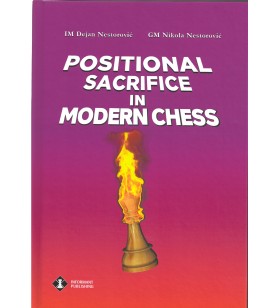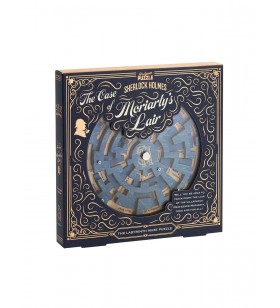- CHESS
- Chess boards and pieces
- Chess books
- Chess books in English and others
- Opening books
- The Ruy Lopez
- Other open games
- Other semi-open games
- The Sicilian
- French Defence
- Pirc & Modern Defence
- Caro-Kann
- Queen´s Gambit
- Slav Defence & Semi-Slav
- Other closed games
- Other semi-closed games
- King´s Indian Defence
- Nimzo & Queen´s Indian
- Grünfeld
- English Opening
- Dutch Defence
- Miscellaneous openings
- General and repertoire books
- Endgame books
- Books on grandmasters
- Books on tournaments
- Books in Dutch
- Miscellaneous
- Chess magazines
- General and middle game books
- Opening books
- Chess books in French language
- Chess books in English and others
- Chess software and DVDs
- Chess computers
- Equipment for clubs
- BOARD & BRAIN GAMES
- GO
- BRIDGE & CARDS & TAROT
- POKER & CASINO GAMES
- PUZZLES & BRAIN TEASERS
- DARTS
Backgammon en cuir impérial rouge
 Livraison sous 48 heures via Bpost*
Livraison sous 48 heures via Bpost*
Livraison gratuite à partir de €69 (Belgique, France, Pays-Bas, Luxembourg, Allemagne)
 You can cancel your order
You can cancel your order
For fourteen days!
 Secure payments
Secure payments
All payment cards accepted.
16 other product
Kuljasevic - The How to study chess on your own workbook
This second-volume workbook in Davorin Kuljasevic's How to Study Chess on Your Own series is optimized for chess players with an Elo rating between 1500 and 1800 but is helpful for anyone between 1200 and 2000. The astounding success of his How to Study Chess on Your Own made clear that thousands of chess players want to improve their game and like to work on their training at least partially by themselves. 199 pages
Sielecki - My first chess opening repertoire ( A complete and easy-to-learnrepertoire for beginners and improvers
Christof Sielecki is a popular author with club players, but this time he is offering a book dedicated to beginners who want to get to grips with the game with the essential theoretical foundations. It contains the main principles of the opening, as well as the possibility of building a first repertoire for both white and black. For details of the openings studied, take a look at the book's table of contents in the photos.
264 pages
Delchev - Delchev's Practical Opening Repertoire ( The Scandinavian, Pirc & Modern Defenses) Volume 1
Q&A with the author, Alexander Delchev:
What does it take to become an expert in opening preparation?
How can we learn the secret methods which allow the top players to dominate everyone else in the opening?
Books can hardly be useful in this regard because modern books on openings, regardless of the level of the author, are very standard and straightforward. The title of this book claims to answer this question. Your author will then back up his claim with proof in the form of analysis from a strong engine. You are then left to decide whether or not to include these ideas in your opening repertoire.
What is missing is some sort of guidance and advice relating to what sorts of tournaments and against what sorts of players this idea should be employed. Moreover, every one of you has likely noticed that even the best opening idea still has a relatively short life span and can hardly be used in more than a few games. So far I have published about 10 books on openings and for me it is not a problem to publish another 10 or even more. However, in the modern era I believe the lifespan of an opening book is incredibly short as new games are constantly being played and new ideas are being found. 1 feel it would be much more useful to you if I uncover a new approach to opening preparation, which will be more long-lasting and will improve your play as well.
The method of opening preparation I have used throughout my entire chess-playing career {1997 - 2018) allowed me, with relatively little effort, to be unpredictable the re by winning the psychological battle of the opening. Luring my opponents into prepared opening tricks and traps was great fun ! 314 p.
In the method which I will introduce you to in this book, the first and most important aspect is adapting your approach to each individual opponent and perfect prediction of the opponent's opening choice, to the smallest details.
Keres - Match Tournament for the World Chess Championship The Hague-Moscow 1948 - 75TH ANNIVERSARY EDITION
This book is dedicated to the match-tournament of 1948, which gave rise to the first Soviet World Champion - Mikhail Botvinnik. The main content of the book is the detailed analysis of the fifty games played in this event. Detailed commentary to the games has been written for a very wide circle of qualified chessplayers, in which connection particular attention has been paid to the accessibility of the presentation and the appearance in the games of important turning points. The criticism of the mistakes committed by the participants could seem at times to be overly severe, but represents the fruits of painstaking analysis and should bring benefit to chessplayers who wish to draw the necessary theoretical and practical conclusions from the games of the match-tournament.It is very difficult, and often impossible, to claim absolute accuracy in chess analysis, but at any rate, I have endeavoured to fulfil my work with the maximum thoroughness. 257 pages Hardcover
Translator’s Foreword
It is exactly 75 years since one of the most significant events in chess history – the 1948 Match-Tournament for the World Chess Championship – took place in The Hague and Moscow. To mark this anniversary, my colleagues at Chess Informant have agreed to publish a new English translation of Paul Keres’ book on the tournament.
The original work has been extended to include historical context to the event – in this case, excerpts from the contemporary Soviet chess press and from the memoirs of Mikhail Botvinnik. Keres’ book on the event was first published in his native Estonian language in 1949. A year later it appeared in Russian translation and it came to be regarded as one of the best books on chess ever written. For instance, the likes of Garry Kasparov and Boris Gelfand are both on record as listing it among their favourites.
In this book, Keres’ annotations to the games have been faithfully reproduced. They have not been corrected by computer analysis; instead, they have been supplemented in some cases by the analysis of other masters – generally with that of the other players. In addition, historical context has occasionally been added in those cases where Keres’ assessments of certain openings have been overturned, or at least challenged, by many decades of tournament practice.
It has been a considerable pleasure to work on this project. Keres, as well as being an outstanding grandmaster, was also a superb analyst and annotator. His notes to the games represent a fine blend of general considerations and concrete variations; unlike in many books published today, the latter are never allowed to dominate. It is my sincere hope that the combination of these notes with the additional historical context will succeed in bringing Keres’ work to a new audience, and that this book will be a valuable addition to the libraries of chess enthusiasts of all abilities
Douglas Griffin
Nestorovic - Positional sacrifice in modern chess
Positional Sacrifice in Modern Chess (hardcover). A Word from the Authors : "The sequel, or the second part of the “Secrets of Positional Sacrifice” manual is titled “Positional Sacrifice in Modern Chess”. We assume that readers will conclude that the subject of our analysis are recently played games, especially the games played over the last few years. The book is intended for chess players who aspire to raise the level of positional play in this particular field of expertise, as well as coaches working on chess education. Like the previous book “Secrets of Positional Sacrifice”, the book in our hands is divided into chapters according to the material that is the subject of the sacrifice: the positional sacrifice of a pawn, exchange, piece, rook, and queen. Finally, the last chapter deals with “hot games” and contains six games played during November and December 2021. We believe that the book is as interesting and instructive as its prequel. However, the examples are a tad more complicated, primarily because of the positional rook sacrifice section. In actual fact, the examples on this kind were verydifficult to find in practice, and processing them in the right way was a particular challenge for us. The first section, the positional pawn sacrifice, should encourage the reader to execute one of the most complicated positional sacrifices in practice as often as possible. On the other hand, the sacrifice of exchange is the most common and easiest to apply and can very successfully serve as a means of relieving the fear of possible sacrifice of material. Asymmetric positions, i.e., positions with an unusual distribution of material, are mostly featured in the positional piece and queen sacrifice positions. In the last chapter entitled “Hot Games,” we present the analysis on the topics of various fascinating examples, from the latest games of today’s great players. We tried to choose the examples that were easy to follow, so they are embellished with diagrams and explained verbally as well. We paid more attention to the analysis of the positional sacrifice from the moment of its execution to the end of the game. Hence, the introductory part of each example may be somewhat shorter in relation to the first book. Finally, the invaluable exercises at the end of the book should be mentioned. The tasks cover four topics to make them as interesting and easy to solve as possible. The exercises are based on the correct assessment of asymmetric positions and, of course, on concrete calculations. In conclusion, we would like to emphasize that the book highlights the beauty of human ideas and their practical application. In some cases, the authors give preference to the human idea over the assessment of the computer. When a player cannot calculate complicated lines accurately, he should look for an alternative solution of the similar quality. One of the possible answers is the positional sacrifice that leads to asymmetric material and thus the change of the character of the fight. " 307 pages
Puzzle Conserver Heye 50 gr.
Glue to preserve and fix your puzzles. One tube can glue a 1000-piece puzzle.
Practical and effective.
Tube size: 3.5 x 12 cm

 Français
Français Nederlands
Nederlands English
English